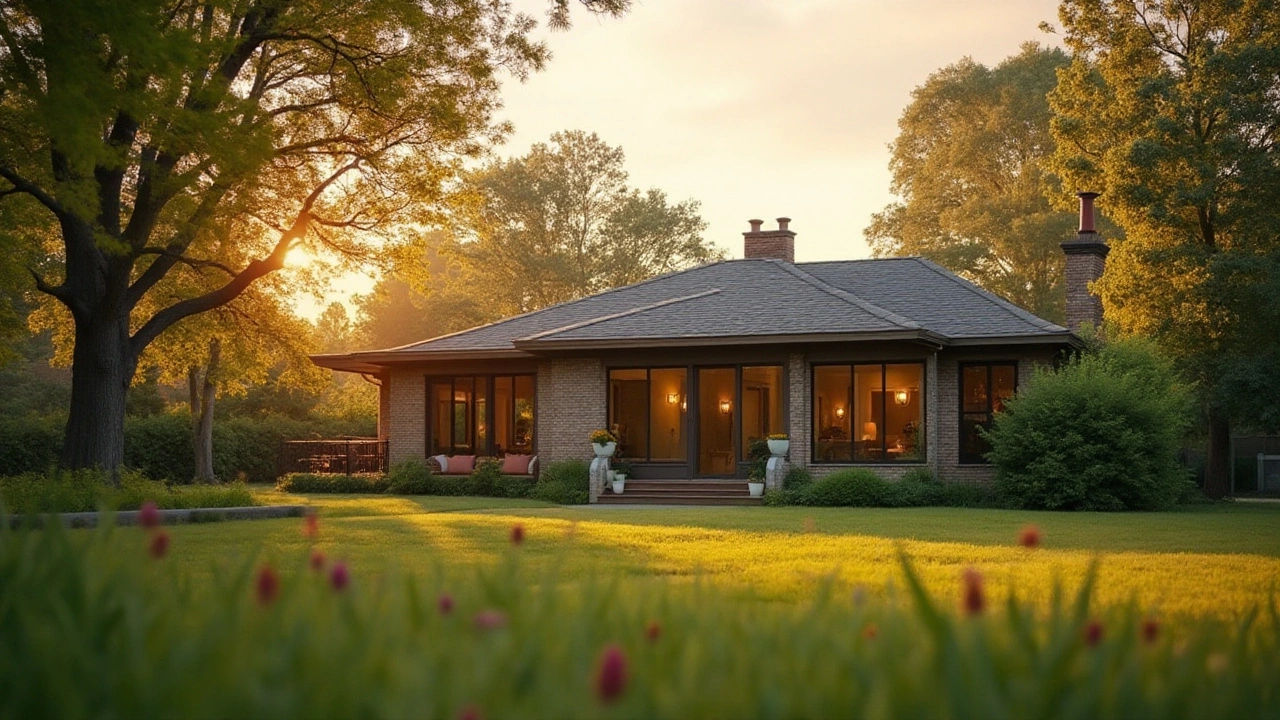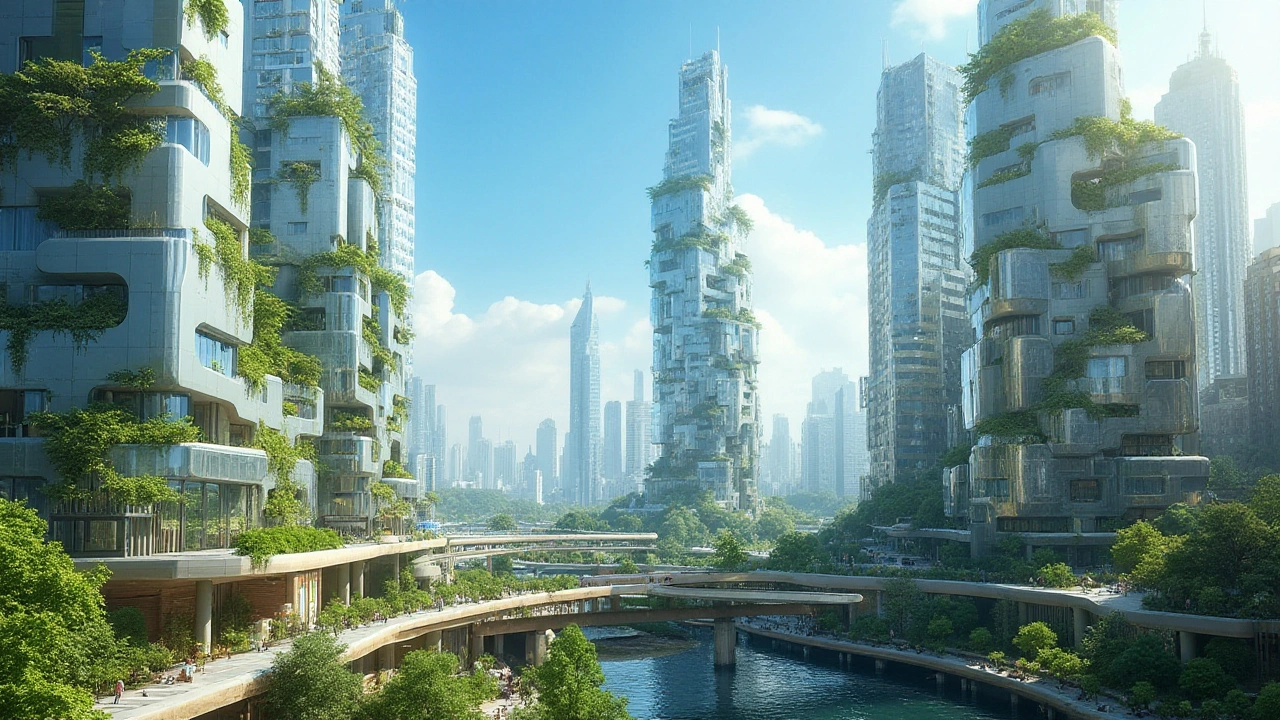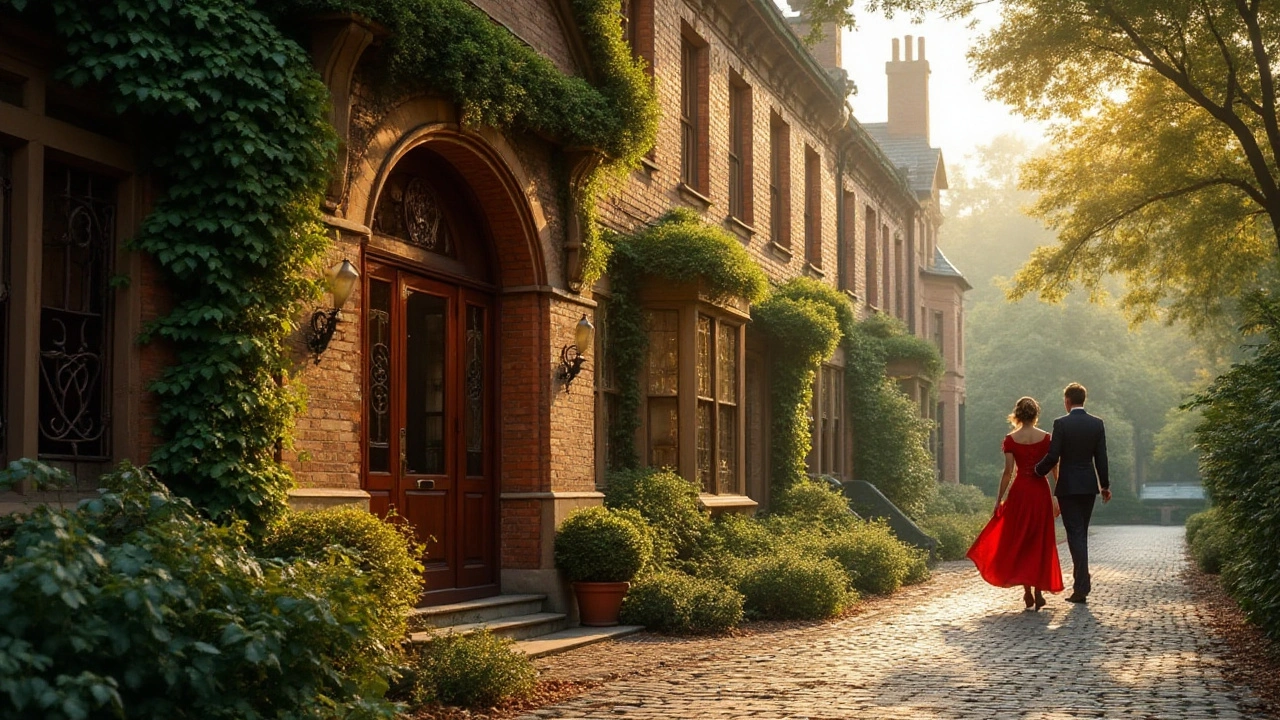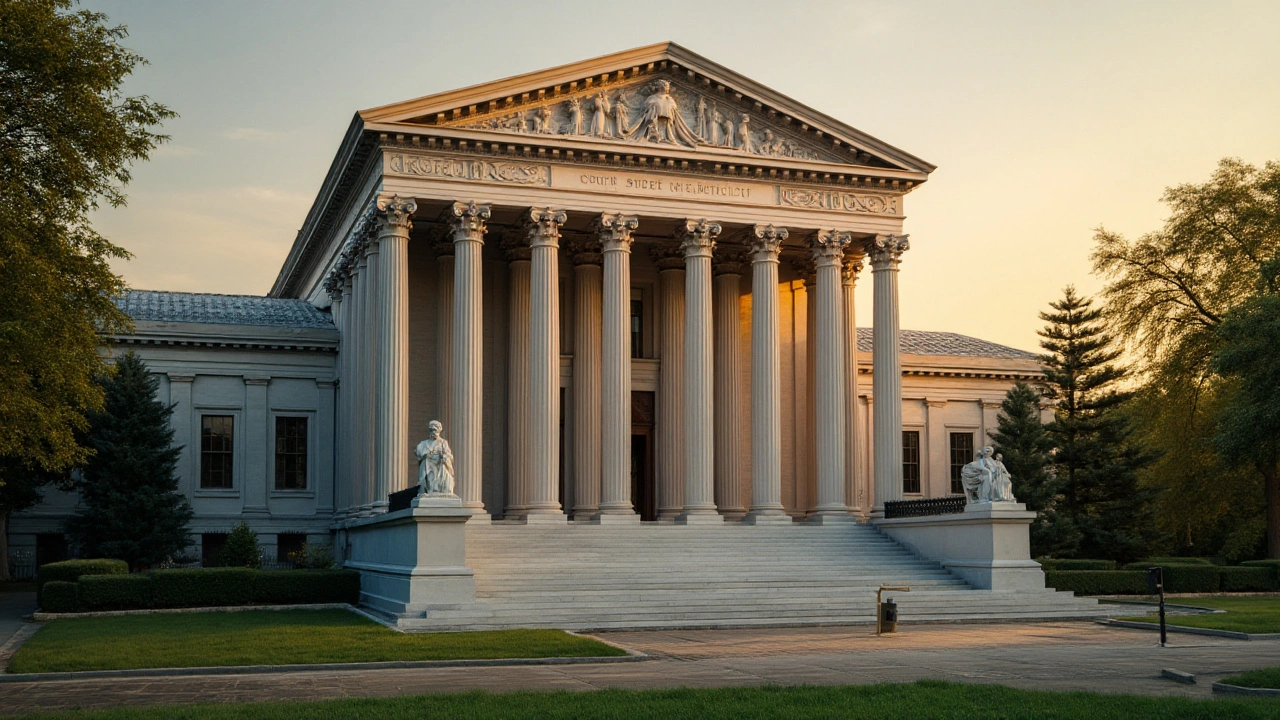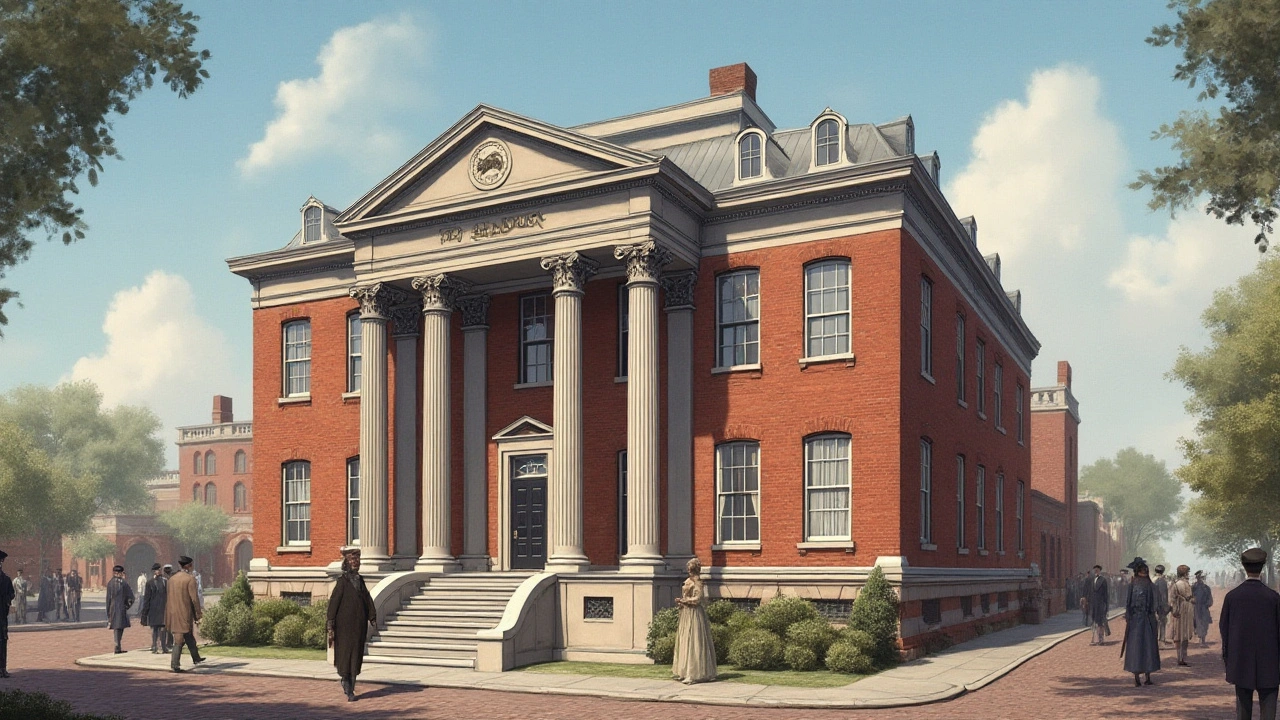Ranch-style homes, with their simple and open layout, have remained a beloved architectural choice across the decades. Originally emerging in the early 20th century, these homes highlight the importance of blending indoor and outdoor living. The design features, such as single-story layouts, large windows, and easy access to outdoor spaces, continue to be appealing to many homeowners today. Ranch homes' adaptability and charm ensure they remain a relevant design choice no matter the era.
November 2024 Archive — Architecture, Style, and Practical Design Notes
This month we collected posts that mix history, practical design tips, and big-picture trends. You'll find pieces on classic house types like ranch and colonial, deep dives into movements such as Postmodern and Art Nouveau, plus forward-looking looks at high-tech architecture and global fashion influences. Read on for quick takeaways and where each article can help you — whether you’re planning a remodel, researching design history, or scouting ideas for a new project.
What we published
Ranch-style homes: learn why single-story layouts, large windows, and easy indoor-outdoor flow keep this style popular. The post gives practical ideas for updating a ranch without losing its character — think wider eaves, modern window lines, and landscape ties that extend living areas outdoors.
Postmodern architecture: this piece explains how mixing forms, colors, and historical references can make urban spaces more lively. It’s useful if you’re designing a mixed-use building or want to add visual character to a streetscape without copying the past exactly.
High-tech architecture: expect clear examples of smart facades, adaptive shading, and integrated systems that cut energy use. If you’re planning a retrofit or a new build, focus on modular systems and visible technology that also serve as design features.
Colonial, Federal, and Georgian styles: three posts cover how classical proportions and details still inform modern design. They offer concrete restoration tips — from choosing period-appropriate trims to updating systems invisibly — so you can preserve charm while upgrading performance.
Art Nouveau: this article shows how natural motifs and flowing lines can be reinterpreted in contemporary projects, like metalwork, tile patterns, or stained glass accents. Use its examples to add handcrafted detail without overwhelming a clean modern plan.
International fashion trends: one post bridges fashion and architecture, highlighting how cross-cultural influences and tech-enabled fabrics mirror how architecture borrows global styles and new materials. It’s a short read for anyone curious about design thinking beyond buildings.
How to use these posts
Looking for immediate value? Use the ranch and colonial pieces if you’re renovating a home — they suggest specific interventions that keep character and add comfort. Use the postmodern and Art Nouveau posts as inspiration boards for façade and interior accents. For sustainability and future-ready projects, the high-tech article gives practical starting points: adaptive systems, visible tech as design, and scalable approaches.
Want a focused plan? Search the site for keywords used in each post (ranch-style, postmodern, high-tech, colonial, Art Nouveau) and bookmark case studies that show before-and-after examples. If you’re a student, pull the historical posts to compare how each era solved climate, materials, and social needs — that perspective helps on design critiques and presentations.
Questions about any post or want reading recommendations tailored to your project? Send a note through the site contact — we’ll point you to the most relevant article or follow-up pieces that dive deeper into materials, systems, or restoration steps.
Postmodern architecture has significantly shaped urban design, offering a blend of styles, forms, and historical references that defy the norms of traditional architecture. This movement, emerging in the latter half of the 20th century, challenges the rigidity and uniformity of modernism by embracing complexity and contradiction. As cities evolve, postmodern buildings bring diversity and creativity, transforming skylines with character and cultural resonance. This article delves into why postmodern architecture is crucial for future urban landscapes, exploring its impact on design philosophy and community identity.
International Style explores the breadth of global fashion as it evolves to encompass cultural diversity and technological advancements. With designers drawing inspiration from across the world, there's a melding of traditions and innovations redefining what fashion means today. The future of fashion is marked by sustainable practices, tech-integrated wearables, and the blending of cultural aesthetics. This article delves into the exciting developments shaping the future international style, offering insights into how these trends are creating a more inclusive and innovative fashion industry.
High-tech architecture is reshaping our built environment by seamlessly integrating advanced technology with design ingenuity. This style emphasizes structures that are not only aesthetically striking but also functionally superior, efficiently utilizing resources to enhance sustainability. From dynamic facades to intelligent building systems, it pushes the boundaries of conventional architecture. Discover how these innovations are paving the way for the cities of tomorrow and offering practical solutions for urban challenges.
Colonial architecture continues to capture the imagination of designers and homeowners alike. This article delves into the historical significance and modern application of colonial design elements. It explores how the charm of these structures is being preserved and adapted for contemporary use. Readers will discover practical restoration tips and the reasons behind the enduring appeal of colonial styles. Embark on a journey through time as we revive the old-world beauty in today's architectural landscape.
Art Nouveau architecture, emerging at the turn of the 20th century, is marked by its ornamental style that draws inspiration from natural forms and structures. The movement sought to break away from the historical architectural styles and aimed to infuse functionality with beauty. Characterized by its flowing lines and intricate details, Art Nouveau was seen in buildings worldwide, with notable examples in Europe and beyond. The style not only captured the aesthetic spirit of its time but also paved the way for future design innovations.
Federal architecture in America traces its roots back to the late 18th century, mirroring the young nation's aspirations and influences. This style is heavily inspired by Roman classicism and is characterized by symmetry, balance, and grandeur, embodying democratic ideals. As a lasting symbol of American heritage, it tells stories through its prominent structures such as courthouses and early government buildings. Understanding this architectural style offers insight into the cultural and historical journey of the United States.
Federal architecture stands as a testament to the evolution and growth of American society. Emerging during the late 18th and early 19th centuries, this style reflects both the ambitions and values of the newly formed United States. With its elegant lines and nods to classical influences, Federal architecture has left a lasting impact on the nation's cultural identity. By examining its origins, characteristics, and continued influence, one gains insight into how architecture shapes cultural expression.
Georgian architecture, a style that flourished from the early 18th to the early 19th century, is renowned for its elegance and symmetry. Its roots are deeply embedded in the classical architecture of ancient Rome and Greece, marrying beauty with practicality. Picture-perfect Georgian buildings can be found strewn across the United Kingdom and other parts of the world, showcasing signature features like sash windows, decorative cornices, and proportional design. This article delves into the history, characteristics, and lasting appeal of Georgian architecture.

